
By Dr. Kamal Sadiq,
Visiting Professor, Institute of Ethnic Studies (KITA), UKM
(A review of the working groups and their views on the theme of “Tenth Malaysia Plan and Malaysian Indians”. These groups met from August 24-26, 2009 at the Office of the Deputy Minister, YB Dato S.K. Devamany, Prime Minister’s Office,Putrajaya, Malaysia. Paper presented on September 15, 2009
1) Identity Gap
Who are we? Identifying the different groups that comprise Malaysian Indian is a crucial first step.
There is a gap between the official identity of the community and the diversity of groups it purports to represent.
Current understandings of the Indian community are too narrow, they reduce the Malaysian Indian community to the “Tamil” Hindu community. Regional, ethnic, caste and religious diversity of Malaysian Indians has to be acknowledged and represented in the leadership and institutions of the community. This diversity is a cultural resource that the community can positively deploy to strengthen 1Malaysia.
Moreover, issues of cultural and economic development can only be addressed if the targeted groups and their specific needs are clearly identified. For example, the Sikh Indian community has its own language (Punjabi, Gurmukhi script) and religious tradition (Sikhism). The Gujarati’s—both Hindus and Muslims—have their own traditions.
Does the Malaysian Indian leadership and institutions represent and struggle for them? Malayalam speakers originally from Kerala, Telugu speakers originally from Andhra-Pradesh have different cultural traditions from the Tamil community. They have their own religious deities and linguistic traditions. They pose a diverse set of challenges as Malaysian Indians.
Additionally, there is diversity within the Tamil community; i) a multiplicity of religions such as the Tamil Muslims, Christians (many of whom are lower caste converts); ii) different caste’s; iii) different classes. Recognizing this diversity means recognizing the variety of their needs. For example, are different caste’s/classes equally represented within the institutions of the Malaysian Indian community?
Disaggregating the Indian community has the advantage of revealing the specific targets for development funds. Through disaggregation, the Indian leadership can become more inclusive to communities who might otherwise be marginalized.
Only then can one ask the Indian leadership: Is the Malaysian Indian poverty specifically afflicting the lower caste’s (and classes) from the Tamil community? What have they done to make sure Indian Sikhs are not identified as “lain lain” but as Malaysian Indians? What is their development plan for the specific needs of the Indian Hindu, Indian Sikh, Indian Christian and Indian Muslim community?
2) Private Sector Gap
The Indian community is demanding positions and funds from the state at a time when globalization is going to generate more opportunities in the private sector. If the Indian community, like sections of the Malay community become too dependent on the state, they will not develop the skill tools or the confidence to face the competition in the K-economy.
First, tremendous wealth can be generated by collaborating in joint-ventures with one of the largest and fastest growing economy in the world—India. This potential is being recognized by Europe, United States and Japan and yet I do not see a comprehensive Malaysian Indian plan in this regard. The Malaysian Indian community has definite cultural and historical advantages with regard to investment in the huge Indian economy, independent of governmental efforts.
Second, the Indian political leadership should exert more pressure on the Chinese business community to hire Indians (and Malays) in crucial sectors of the economy. Striving towards a merit based economy becomes irrelevant if the large and expanding private economy is dominated by one group. If Indians (and Malays) fail to actively seek and hold high and critical positions in the private sector, remaining solely dependent on governmental largess, the private sector gap will increase further. For this, the Malaysian Indian leadership should launch a national campaign, backed by economic surveys, to increase the Indian representation in the private economy, especially at high levels in the corporate sector.
In short, Indians need to tap the potential of the private sector and become key players in the K-economy.
3) Delivery Gap
The government claims pumping hundreds of millions of Ringgit into the development of the Indian community, yet the community believes very little is reaching them. Clearly, the delivery system of the government is unable to reach sections of the community. What are the components of the delivery system that the government relies on for reaching the community? MIC and the Malaysian bureaucracy are the pillars of this delivery system.
The government is allocating funds to the MIC/Bureaucracy for disbursement, and yet, it is not reaching the community. A possible reason for failure to address the developmental problems of the Indian community is misallocation or outright corruption, especially at lower levels in the delivery chain. There are several ways to mend the delivery system.
New Leadership: The government should pressure the MIC to be more inclusive by bringing in newer leaders more in touch with the community’s needs. The Indian community is changing, its needs are evolving, and yet, MIC is struggling to keep up with the changing desires of this evolving community. There is a serious disconnect between the old leadership and the needs of the Malaysian Indians 2020. The community and the state badly need fundamental institutional and leadership reforms. I strongly recommend that both MIC and the government work closely with Indian NGO’s to channel development funds. The very active NGO’s in the community can be a critical asset at the frontlines of development.
Transparency: Essential to allocating funds to the “new” leadership at MIC or the NGOs is a fundamental commitment to complete transparency. All the funds allocated should be online, , detailed, comprehensive, and easily understood through the websites of government allocating agencies, MIC and NGOs. Every penny should be accounted for online by the disbursing agency. Increased transparency means effective communication with the diverse sections of the Malaysian Indian community.
Reforming Bureaucracy: According to the discussions in the Working Group, the state bureaucracy’s focus on Malay development needs, has desensitized it to the desires of the Indian community. If this is the case, the Indian community should encourage the government to hire and upgrade new Indian talent into the bureaucracy and place them at critical delivery points. It matters who is at the point of contact locally with the Indian community. For example, for problems commonly shared across communities—such as Malay and Indian poverty—the government should be encouraged to send a mix of Malay/Indian bureaucrats to the region. Moving to a K-economy requires pooling a diversity of ethnic talents.
The question is not just to mend this delivery system, but to also incorporate mechanisms which directly target restoring public confidence. If development is in fact occurring, why do people believe otherwise?
4) Credibility Gap
Largely based on the grassroots experience of NGO’s and community networks, the Indian community strongly believes it has been economically marginalized since independence. Figures provided by economists/policy makers taken from the government [i.e. Economic Planning Unit (EPU)] contradict such assertions. According to governmental data, Bumiputera economic indicators are worse than Indian economic indicators (poverty and hardcore poverty, household income). A variety of economic indicators show Malaysian Indians to be making economic progress.
So, why does the Malaysian Indian community perceive itself to be marginalized or poor? Community activists are not imagining poverty or marginalization. I believe they are pointing to a critical structural problem: a rising credibility gap:
The Malaysian Indian community does not believe the validity of government data anymore.
There are several possibilities here. Either the government data is wrong, or it is incomplete, or it is correct but is not being communicated effectively. In either case, a distance is developing between the Indian community and the government.
5) Communication Gap
If Malaysia is to march towards a K-economy, it has to learn some lessons from India. Until the early 1990s, much of India’s governmental information was barely available, often classified as “confidential”. Procedures for foreign investment, insurgency in Kashmir, the condition of Muslims in India---were all “secrets”. Now, such information is available on the web, including comprehensive reports on the condition of the Muslim minority in India, governance in Kashmir, etc.
Formerly ‘sensitive” issues are available on government websites as a dossier of reports and reviews. They are being debated and discussed. The state has gained legitimacy, if not trust, in civil society as a result of this strategic transparency and e-governance.
K- Economy Requires Governance with Strategic Transparency. A responsive bureaucracy in the K-economy has to be quick, open and transparent. Why?
i) Too much secrecy breeds incompetence, a lack of accountability and unresponsiveness. The bureaucracy becomes independent of the leadership and the community, generating and spending funds for its own survival and growth. A fossilized bureaucracy was the downfall of the Soviet Union, is the hurdle in India’s growth, and Japan’s dynamism.
ii) Communities can develop parallel structures of communication that suggest “conspiracy”. Because the state-data is not acceptable, civil society delinks itself from the government (including the MIC) to speak in conspiratorial terms. Hence, symbolic issues such as “the cow-head” controversy or the condition of “stateless Indians” has a domino effect in alienating the community.
The communication lines between the State/Malaysian Indian leadership and the community have to be repaired urgently.
Quick, public, and transparent communication of state action will generate trust
between community and government.
----------------------------
Dr. Kamal Sadiq, Associate Professor,Department of Political Science, University of California, Irvine,Irvine, CA 92697-5100;Email: kamal@uci.edu,Phone: 001+ 949-824-3126.
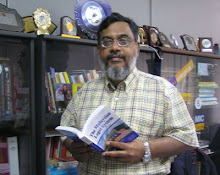





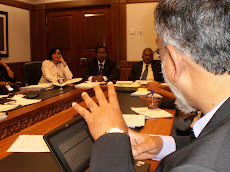
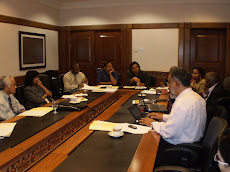
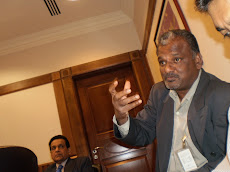
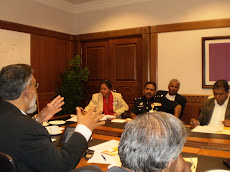
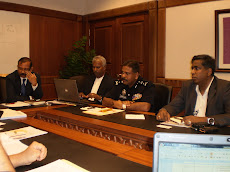




No comments:
Post a Comment